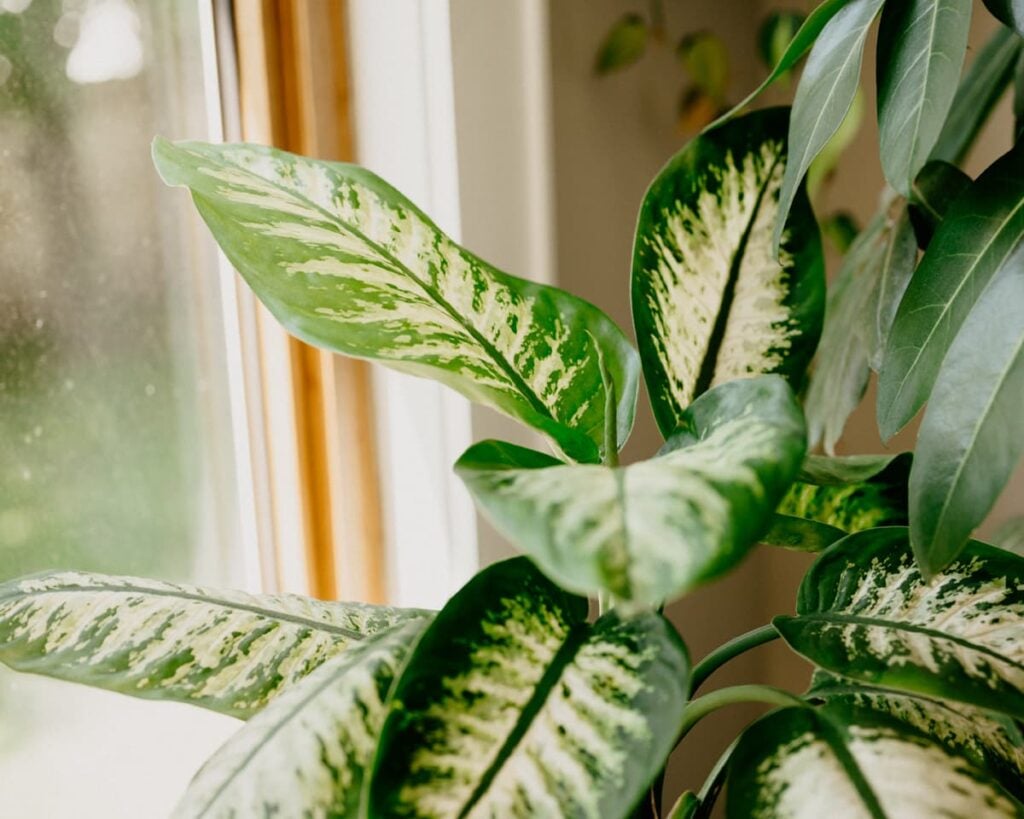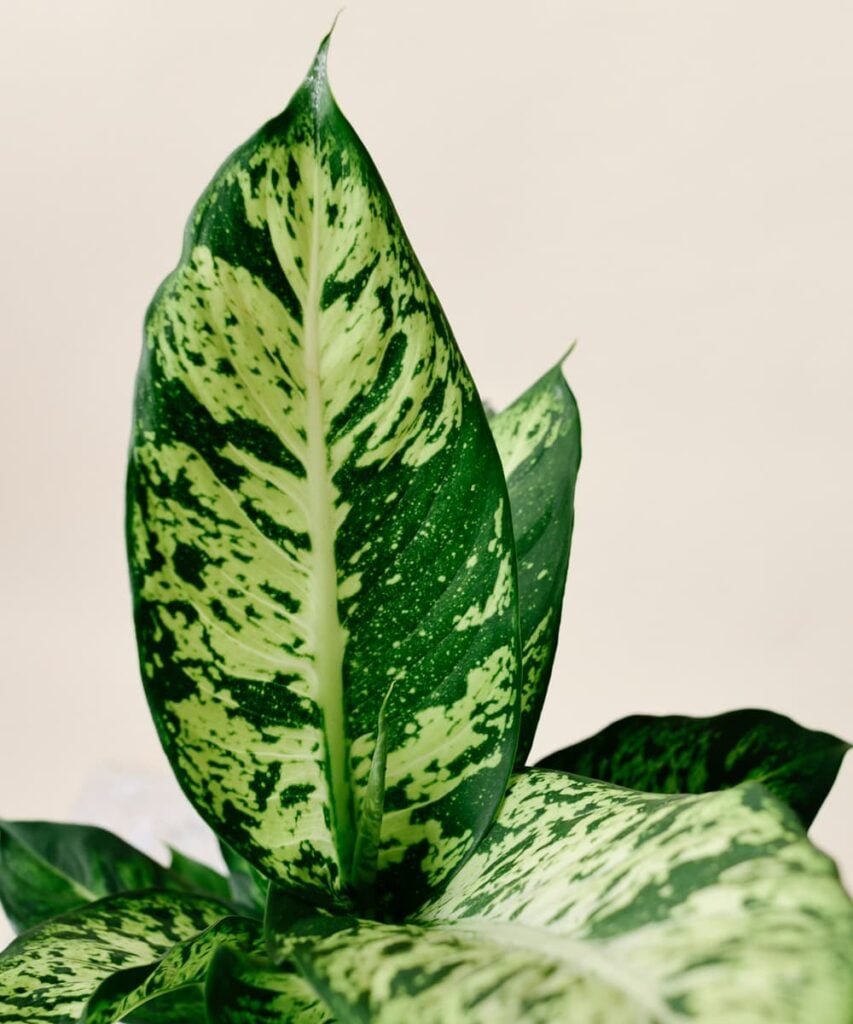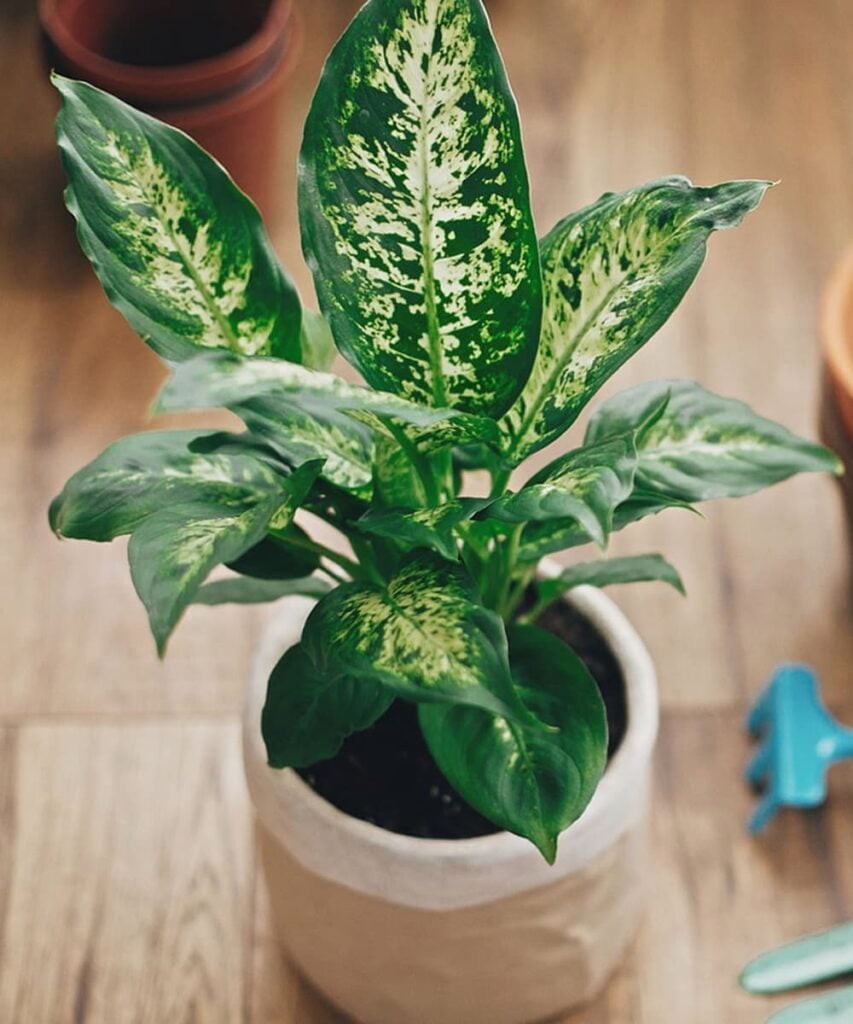Everything You Need to Know about Dieffenbachia Care

The Dieffenbachia is a lush and showy plant from the tropics of Mexico, South America, and the West Indies. Often called “Dumb Cane” due to its toxic sap that causes irritation when ingested.These popular houseplants give a lush, tropical look to any room, and come in many varieties. Check out our Dieffenbachia collection.
Dieffenbachia Care
The large and showy dieffenbachia can be the perfect living decoration for the home or office. When you learn how to care for a dieffenbachia plant, you’ll find it to be adaptable to different kinds of lighting and conditions in which you might not expect a dieffenbachia houseplant to grow.
Light
Dieffenbachia thrives well in bright, indirect sunlight or partial shade.However, it can tolerate full shade, as well. Avoid placing your plant under the intense, direct sun because its leaves will burn.
Soil
Grow dieffenbachia in soil with good drainage and plenty of peat content. The best soil for a dieffenbachia is a rich organic mixture that drains quickly.
Water
Keep the top inch of soil moist, but do not overwater it. Your Dumb Cane plant can tolerate missed watering, but extended periods of watering neglect can make its leaves shrivel. Dieffenbachias like to be kept moist but not waterlogged. March to October is the growing season for dieffenbachia. During those months the plant will require more water.

Temperature and Humidity
Adding to our list on how to care for your Dumb Cane plant is to put it in a humid environment. It’s also best if you can mist it often, place it near a humidifier, or use a pebble tray.
It prefers temperatures between 16–27°C. One thing you should know about your Dumb Cane plant is it can’t and won’t tolerate cold temperature because it will likely lose lower leaves. So, avoid placing your plant near air conditioning vents, doors, and drifty areas.
Fertilizer
Another on our list on how to care for your Dumb Cane plant is to fertilize it with a liquid fertilizer for indoor plants every two to four weeks during the growing season. Remember to dilute and apply the fertilizer according to the instructions to avoid fertilizer burn or plant burn.

Common Problems
- Symptom: Quickly growing leggy and tall.
Cause: Inadequate sunlight. - Symptom: Brown leaves, discoloured and soft stem.
Cause: Overwatering. - Symptom: Yellow leaf, leaf drop.
Cause: Exposure to cold environment.
Though a shaded area isn’t recommended for this plant, if it finds itself in a dark corner, it will manage to stay alive and maintain a healthy appearance, but it will stop growing. Given the plant’s adaptability to a variety of lighting conditions, it makes for a good easy-care houseplant in most homes and offices. Dieffenbachias are also a good choice to brighten up dull commercial spaces as they can survive entirely on artificial light.
This vibrant, tropical, and easy-to-care-for plant will adapt to different environments and require little attention from you.
Important: Dieffenbachias are extremely poisonous plants with a #4 toxicity level. If the sap gets on your skin, wash it off immediately. Seek medical advice if a child or pet ingests any part of a dieffenbachia plant.
Dieffenbachia care reference: TheSpruce, Trees
